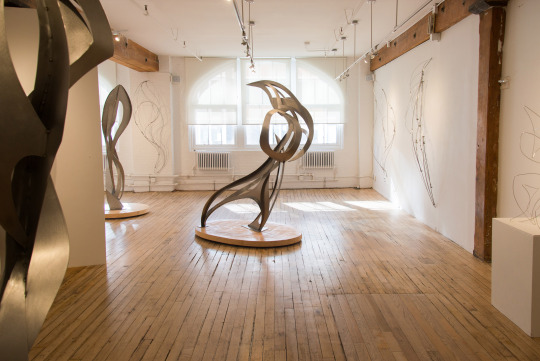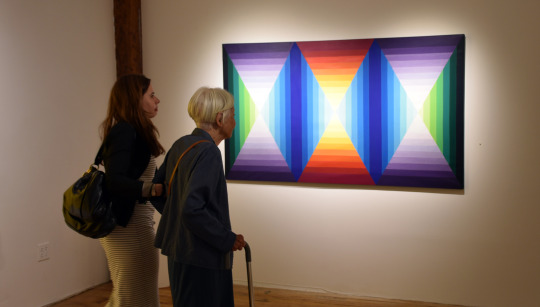Conversations | Thrive as a Mature Artist
“Artists should be self-motivated and get in the habit of advocating for themselves.” – Marlena Vaccaro, Carter Burden Gallery Director
Are you a mature artist looking to make a greater impact in the visual arts world? As your career evolves, you can, too, and there are institutions and arts patrons who appreciate the need to offer substantial support and recognition to mature artists. Below, we’ll highlight Carter Burden Gallery in particular, in New York City. Further examples include The New York Foundation for the Arts (NYFA), which launched the Murray Reich Distinguished Artist Award with support from a donor. This Award recognizes artistic excellence and provides resources to visual artists with a long history of creative practice. Additionally, the Adolph & Esther Gottlieb Foundation awards Individual Support Grants to mature artists who have worked for 20 years or more in their practice, and Artist Trust offers the Twining Humber Award to female-identified visual artists, age 60 or over, who have dedicated 25 years or more to creating art and who reside in Washington State.
Carter Burden Gallery also recognizes artists who have been dedicating themselves to their practice for decades. The Gallery grew out of the Carter Burden Network, an organization that promotes the well-being of seniors 60 and older. Carter Burden Gallery works to give a voice to New York City’s re-emerging older professional artists and is committed to empowering these artists through the exhibition and cultivation of their work.
We spoke with Gallery Director Marlena Vaccaro about the Gallery’s work and her advice for mature artists, as well as for artists of all ages.
NYFA: Who do you define as being a “re-emerging” artist? How can those individuals, who may not have a recent exhibition or sales history, find opportunities to gain recognition for their work?
Marlena Vaccaro: We define re-emerging artists as those older professional artists who—simply because of age—have not been thought viable for gallery consideration. Like artists of any age, they work every day at their practice and are creating unbelievably vital and important work. We’re a rare gallery in that we look at all submissions, and we look at the work first before looking at the bio or the exhibition history. That may not be the case with many galleries.
Artists, no matter what age you are: if you haven’t cracked the top ten galleries (which most people don’t), start with small, local galleries. Start with local museums, and go into your neighborhood. If you find an empty space, be assertive, and say, “Hey, you’ve got an empty wall. I’d like to exhibit my work there.” Artists should be self-motivated and get in the habit of advocating for themselves, and perhaps let go of the glamor or ego of only exhibiting in “special” or major galleries.

NYFA: Do you have any tips for successfully submitting your work to Carter Burden Gallery’s Open Call?
MV: The easiest way to apply is to visit our website and submit images and a bio. We look at every submission from eligible artists, who are aged 60 and older. Last year after The New York Times profiled us, we received over 500 submissions in one day. The same thing happened after NPR’s “Morning Edition” covered us. But don’t be discouraged by the numbers. We encourage all eligible artists to submit because we really do look at and respond to every submission.
NYFA: What advice would you give a mature artist on how to build a strong presence online and on social media?
The more online presence you have the better, especially in regards to online sales. But the bottom line is, that’s a skillset that many older artists don’t have right now. We’ve been most successful in connecting our exhibiting artists with art school students who can help create a website, or help set up social media accounts. So I encourage anyone who feels they are lacking in this arena to reach out to universities and art schools, since many students need to do community service. Or, more generally, artists can reach out to someone in their network who can sit down with them and show them the ropes. Once an account is set up, most people are able to maintain it.

NYFA: How can an artist work on expanding their network and building a strong community, regardless of whether they live in a major arts center like New York City?
MV: Staying connected with the local arts community is very important. Go to galleries, openings, and open studios. Artists can become isolated when they work so a network and focal point, like Carter Burden Gallery, offers both moral and artistic support that really makes a difference.
NYFA: In your view, what can consumers of culture and arts organizations do to better support older artists?
Art audiences can be supportive of older professional artists by letting go of preconceived notions of age and currency and simply letting themselves experience the work. It’s quite a wonderful thing to meet and speak with an artist that has been making art for 30, 40, 50, 60, or 70 years.
I have the same advice for cultural organizations. Let go of the ageism. Don’t put limits on people. No matter the age, they’re artists: look at their art. Evaluate the work on its own terms without letting filters like age or cultural background get in the way.
– Interview conducted by Mirielle Clifford, Program Officer Online Resources
Sign up for NYFA’s bi-weekly newsletter, NYFA News, to receive announcements about future NYFA events and programs and to see the latest interviews and articles from NYFA Current. Visit NYFA’s Business of Art Directory for more professional development content.
Images, from top: John Beardman and Beth Barry at their January 2018 opening; Recent Sculptures and Drawings, David Cerulli, October 2016, Courtesy Carter Burden Gallery; Lilyan Stern views her painting with her granddaughter at June 2018 opening





